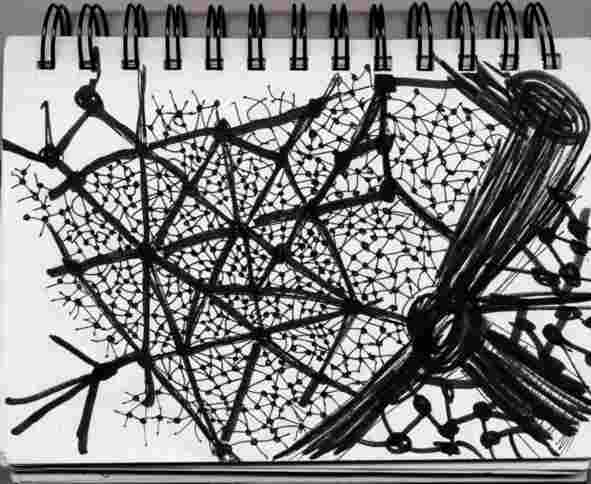Ubiquitous computing has become an integral part of our lives. In the past week, I spent, on an average, about 13 hours everyday using some sort of computing device. I spent a great chunk of my time reading theory on the subjects of security, territory, population and topic modeling. I also devoted a decent amount of time to topic modeling modules that I am developing as part of my research. The charts below depict my daily media usage from Feb. 5 to Feb. 11.
Marshall Mcluhan defines media as “artificial extensions of sensory experience.” But a talk about the media, as defined by Mcluhan, is impossible without bringing into discussion the ideas from the physical world because we experience the interaction of media and the physical world in the form of resemblances and analogies. While tracking all media that I encountered in the past week, I realized how media shapes and paces my day-to-day conduct. To say that I experience media in various modalities assigns a passive role to the media in my life. I would rather say that I encounter the world through the media. Below are three analogies that I found useful in understanding some aspects of this encounter.
Twitter and Facebook as town squares
The town square is a public space where communities gather and interact. The function of a typical town square in pre-Renaissance Europe revolved around community interaction rather than mercantilism. People traveled to town square to know what was going on in the community. Their arrival and departure was constrained by physical mobility— i.e. they had to move from one place to another. Both Twitter and Facebook are analogous to traditional town squares, except that they are frequented more often because there are virtually no physical barriers. When I say that “I am going on Twitter or Facebook”, I am defining my relationship to these media artifacts in terms of space. Both Twitter and Facebook are ‘places’ where I find what’s going on in the communities that I am part of. I can interact with people in these places, or I can choose to be a passive observer. This is why I think that the metaphor of town square appropriately fits these virtual places. In the last week, I spent, on a daily basis, about 15 minutes using Twitter and about 9 minutes using Facebook. What was remarkable about my interaction with Facebook and Twitter was the daily frequency of visiting these sites: I visited Facebook about 17 times and Twitter about 30 times. So even though I was spending less than a minute on each visit on these sites, I was visiting these sites more than two times in an hour on an average.
News and the art of scrying
The art of scrying is an archaic idea, but we can also say that it is completely contemporary, since the art of scrying basically involves revealing the unknown. To that extent we can say that the practice of scrying is a dream of our contemporary news needs: to reveal what is happening and to predict what will happen. Technology has delimited our visible space like a scrying crystal ball. I am able to gaze at things and regions that hitherto seemed obscure. I follow news as it is happening, I analyze what has happened, and I look for indicators that are predicting what is to come. In addition, I look at news not from the perspective of a nation-state’s subject, but rather from the perspective of a world citizen who belongs to multiple polities and communities. The desire to know things in real-time now is reflected in my continual attentiveness toward news websites. The chart below shows the daily frequency breakdown for my preferred news sites. 
Gmail and Skype as rhizome roots

Rhizome: www.nomadology.com/rhizome.jpg
The idea that any point can be connected to another point is contained in the metaphor of rhizome. It is a metaphor that apprehends multiplicities. My world on the Internet extends my physical world. In other words, the world on the Internet, which is hyperreal, is very much part of my territorial locus. Both Gmail and Skype allow me to interact in a rhizome reality that exists at the intersection of the real and the hyperreal. Gmail and Skype are the main means of communication and scheduling for me. Even my off-line encounters are organized by these tools. In the past week, I spent about 70 minutes using Gmail and about 15 minutes using Skype on a daily basis. These interactions, like my news usage, permeated my daily schedule on a continual basis.


Ali – First of all I’m very impressed that you can keep scheduling and communication down to 12%! And these images of town square, scrying and rhizome are interesting analogies to bring to online spaces. My first reaction to them deployed in this context is “yes, sort of”. Facebook and Twitter are something like a town square in that they can be conceived of as plazas that people pass through chattering to each other. And you could even make a case that they are similar because in a plaza we are with people but also not with people. Together but alone. Like, I kind of wonder how many tweets are never read by anyone. Now that I’m on this track I’m thinking that it would be a fun performance to go into a public plaza, stand on a soap box and yell out things I would normally tweet about and see what happens…
Great news diary for all and i am really grateful to like your news diary like as
Daily news diary These are Very inspiring, motivating, and interesting. Thanks a lot for sharing.